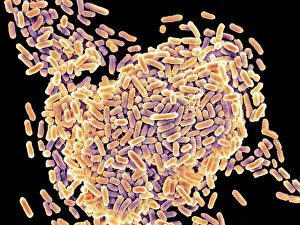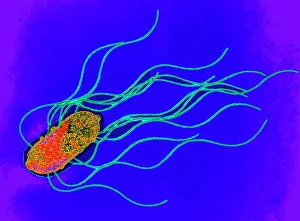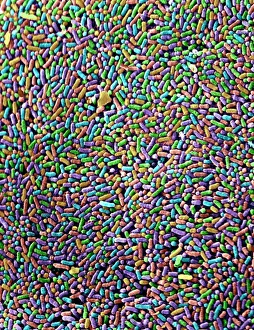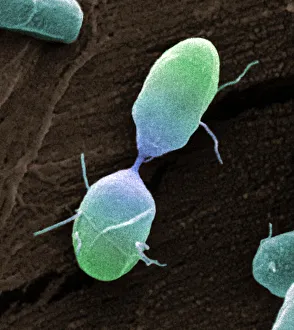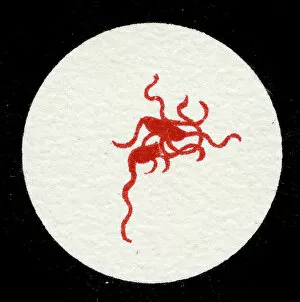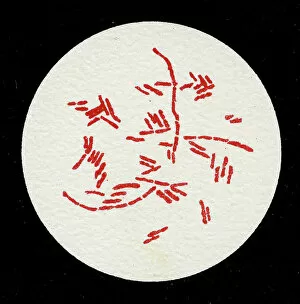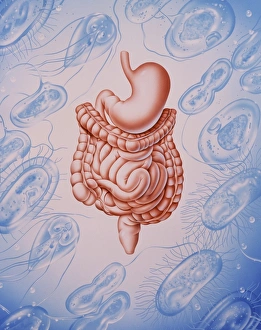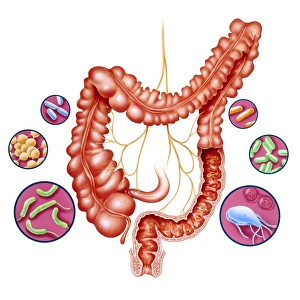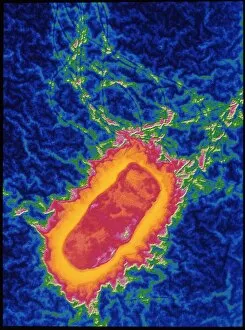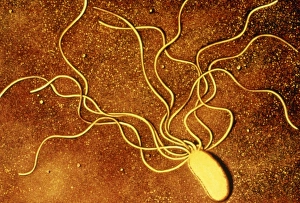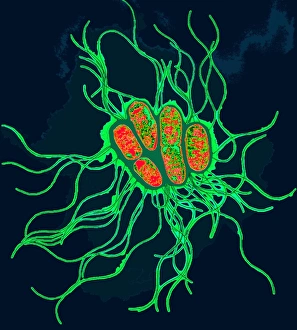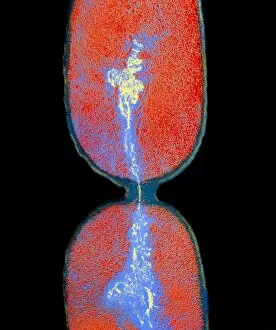Salmonella Collection
Salmonella, a notorious bacteria responsible for foodborne illnesses, is captured in stunning detail under the scanning electron microscope (SEM
All Professionally Made to Order for Quick Shipping
Salmonella, a notorious bacteria responsible for foodborne illnesses, is captured in stunning detail under the scanning electron microscope (SEM). Its flagellate structure allows it to move with ease, making it highly adaptable and capable of infecting various hosts. In this coloured transmission electron micrograph (TEM), we witness the intricate features of a Salmonella bacterium up close. The resilience is evident as we observe its division process through SEM imaging. The colony Typhi from 1906 lithographs showcases the distinct bacilli shape adorned with flagella, emphasizing their potential to cause harm. These conceptual images vividly depict how Salmonella typhi can lead to typhoid fever, highlighting the severity of its impact on human health. Amidst these scientific visuals lies an everyday scenario – a child innocently enjoying an egg. This serves as a reminder that salmonellosis often stems from contaminated food products such as eggs or poultry. However, science continues to advance rapidly; nanorobots are now being developed to combat harmful bacteria like Salmonella head-on. As we explore the world of microbiology and delve into understanding pathogens like Salmonella better, our knowledge equips us with tools for prevention and treatment. Let these captivating images serve as a testament to our ongoing battle against this formidable foe – one that requires constant vigilance in ensuring food safety and effective medical interventions.

